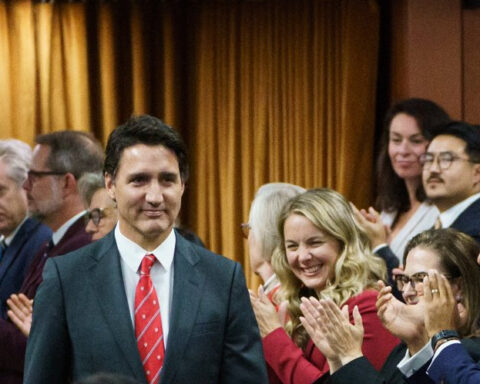The political landscape appears to be shifting in subtle but important ways. The Liberals seem to have stopped the bleeding and are now statistically tied with the floundering Conservatives who are over 12 points back from their majority achievement in 2011.
The NDP continues to hold on to a narrow but significant lead which would be more decisive save for the entry of Gilles Duceppe into the Quebec race. An elevated ‘other’ reflects dissatisfaction with any of the above and perhaps those who would prefer a ‘more than one party’ answer.

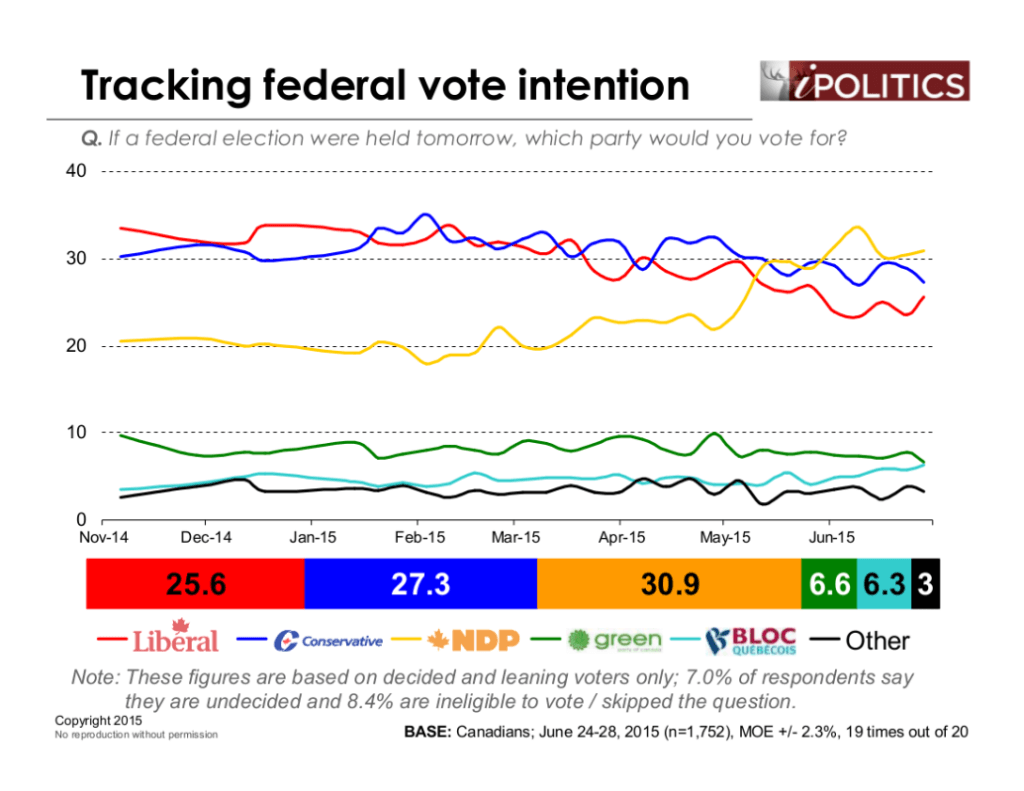
The NDP rise continues to be the most impressive feature of our recent time series data, but the declines of the Conservatives and the Liberals have also pretty clear over the past month. The Liberals, however, have shown a rebound whereas the Conservatives are once again headed downward.
There is nothing dramatically different in the regional patterns but a few points are in order:
- The NDP strength is distributed across the country but they would have good seat efficiency in Quebec and British Columbia.
- The tight three-way race in Ontario remains the critical unknown, but we can now certify the NDP rise there as more than an overnight sensation.
- The Liberals are looking competitive in Quebec, but the Bloc Québécois is the big question mark. Will their ascension continue? If not, that will favour the NDP as the default option. The Conservatives appear to be receding badly in Quebec as the terror and culture themes that revitalized them fade from public priority.
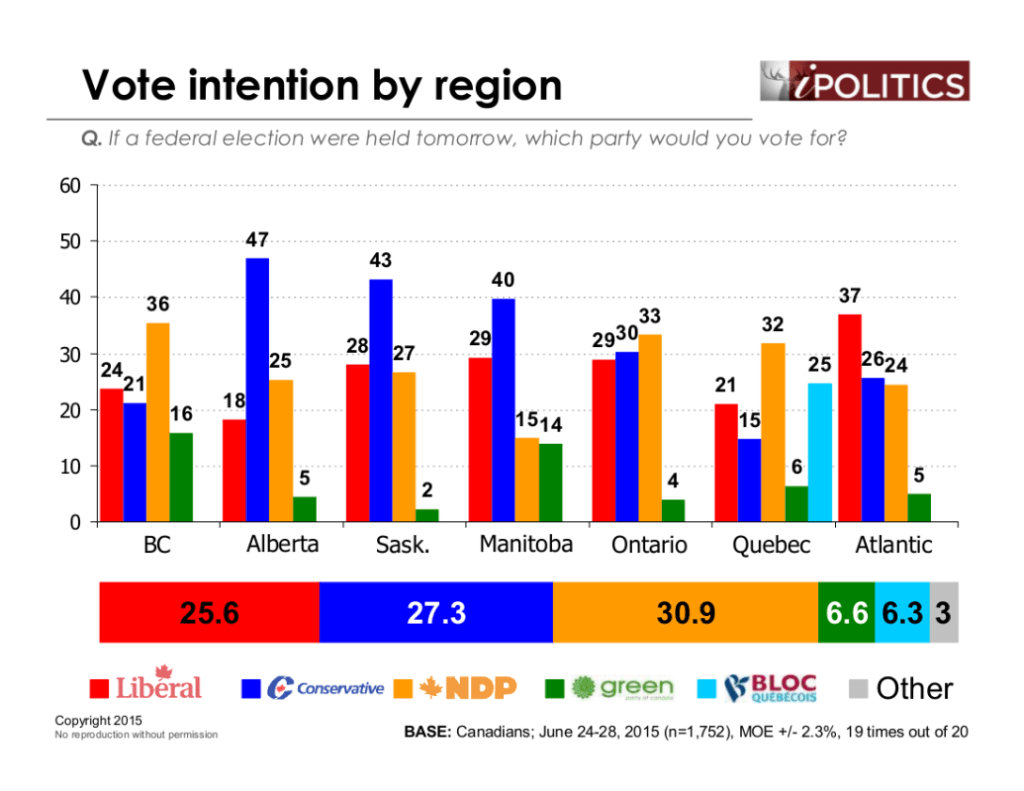
The NDP continues to do well across the demographic spectrum but their concentration with younger voters may be a concern in terms of turnout. The Liberal vote shows almost no significant differences across age or gender. The NDP’s continued advantage with university educated voters remains a major and revealing asset.
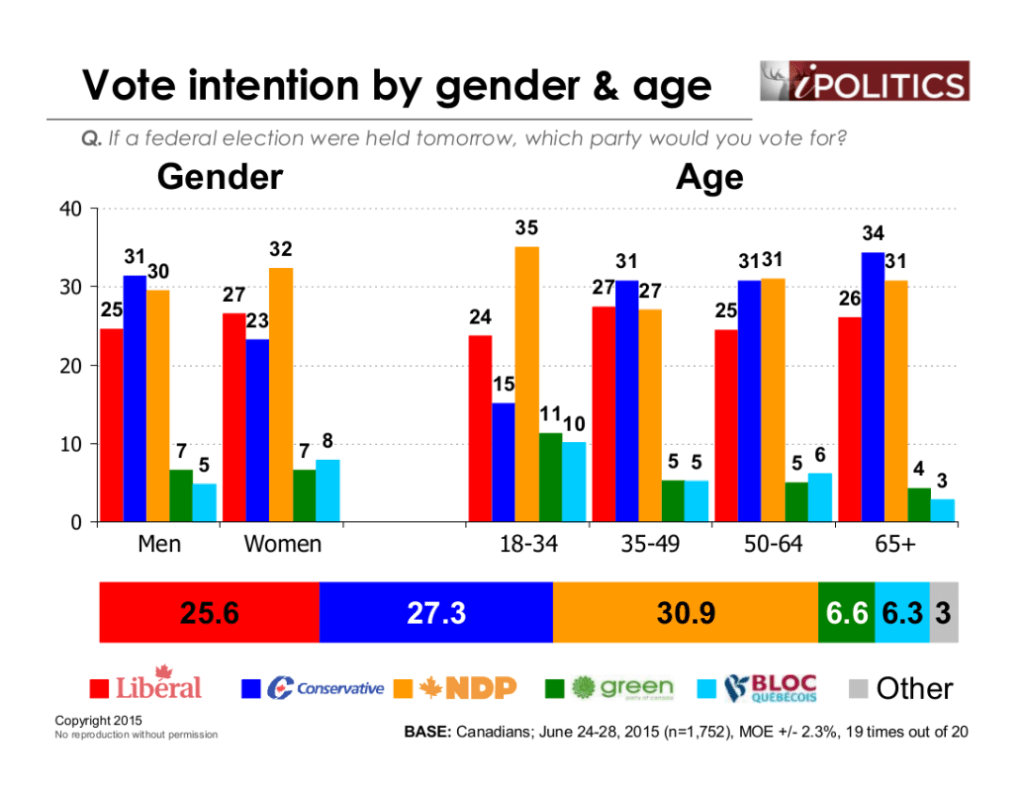

Finally, the fate of two smaller parties is also up in the air. The Green Party has fallen back and really needs something to get back in the fray. There is a big difference between 10 points and eight points, particularly in pivotal ridings where they could aspire to be the best non-Conservative choice for progressive voters. The Bloc Québécois has definitely been invigorated by the return of Gilles Duceppe and this has been largely at the expense of the NDP. This dynamic will be important to watch in coming months.
The Canada Day Effect?
Turning to directional measures, we see a slight improvement in Canadians’ satisfaction with where their government is headed. There are a number of factors that could be driving this modest reversal, but the most likely explanation is that Canada Day, with its myriad of celebrations endless displays of red and white, has re-kindled Canadians’ appreciation for the country in which they live – at least for the time being. However, this is not the first time that we have seen a temporary Canada Day boost and the perceived direction of both the country and its government are still very poor by historical standards.
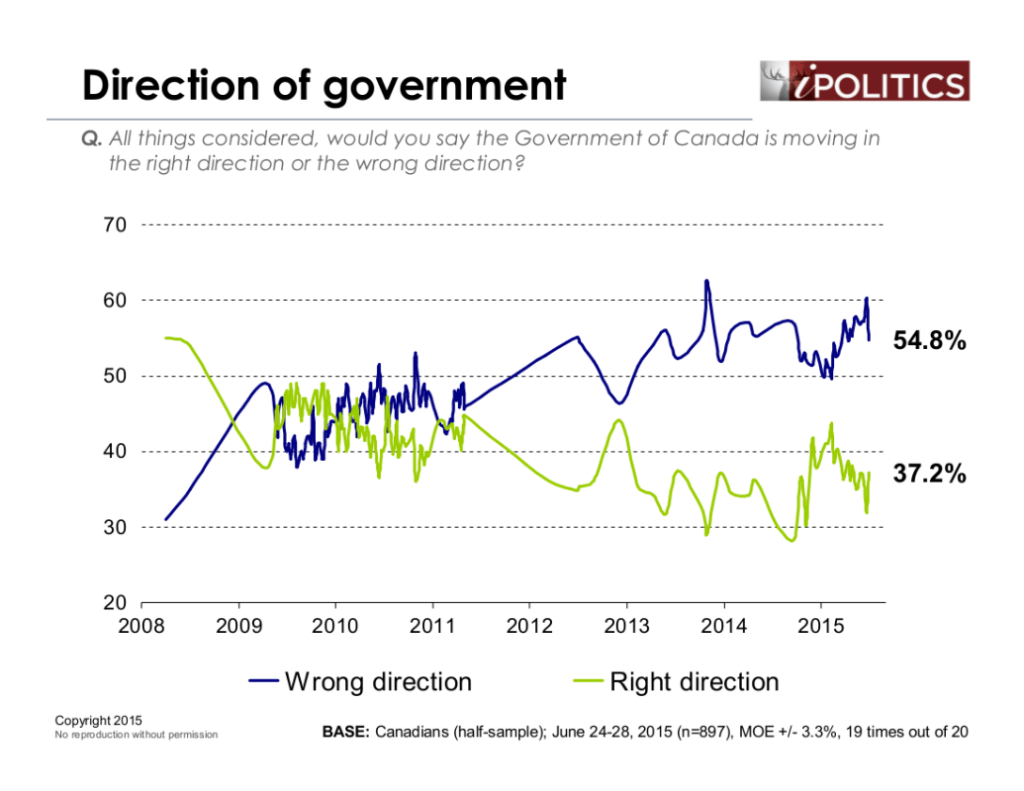
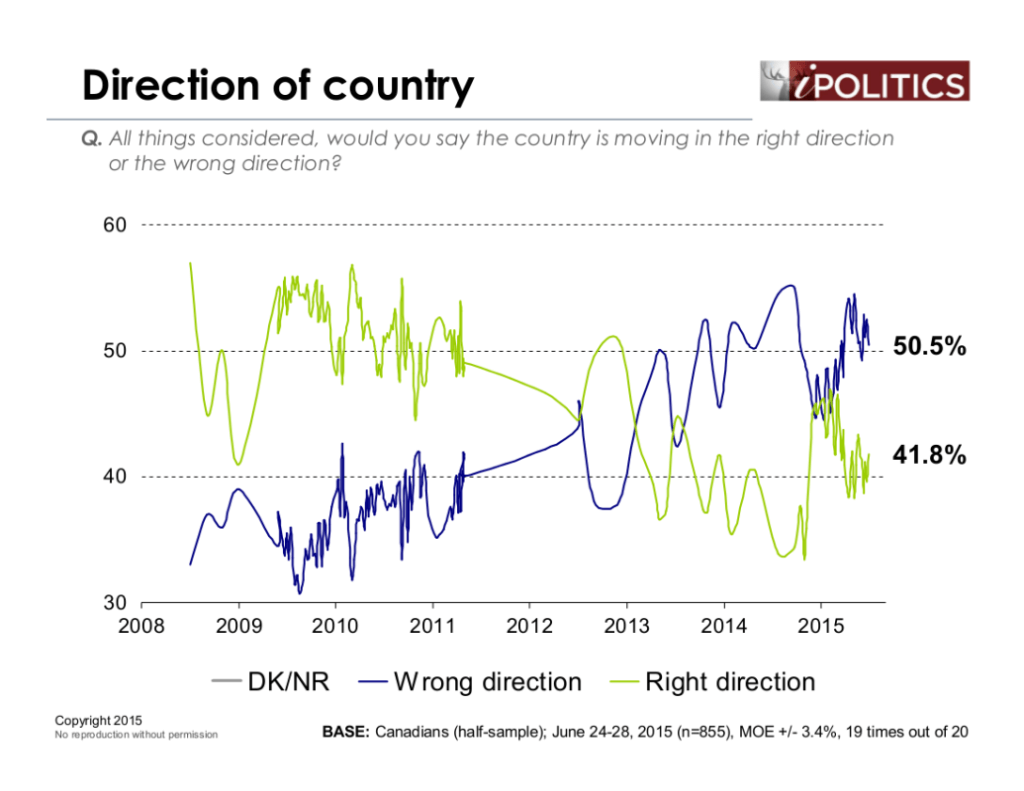 Liberals improve standing on best/clearest plan
Liberals improve standing on best/clearest plan
Finally, we updated our tracking on which party holds the best and clearest plan. While no party holds a distinct advantage here, it is notable that the Liberal Party has succeeded in improving its standing by two to four points on all three indicators. While none of these improvements on their own is statistically significant, the fact that the party has improved its reputation across the board is highly noteworthy. Indeed, it appears that the Liberals have managed to raise the volume and clarity of their plans for Canadians and this previously muted connection was probably as or more important than any other factor in their fall from voter grace over the past few months.
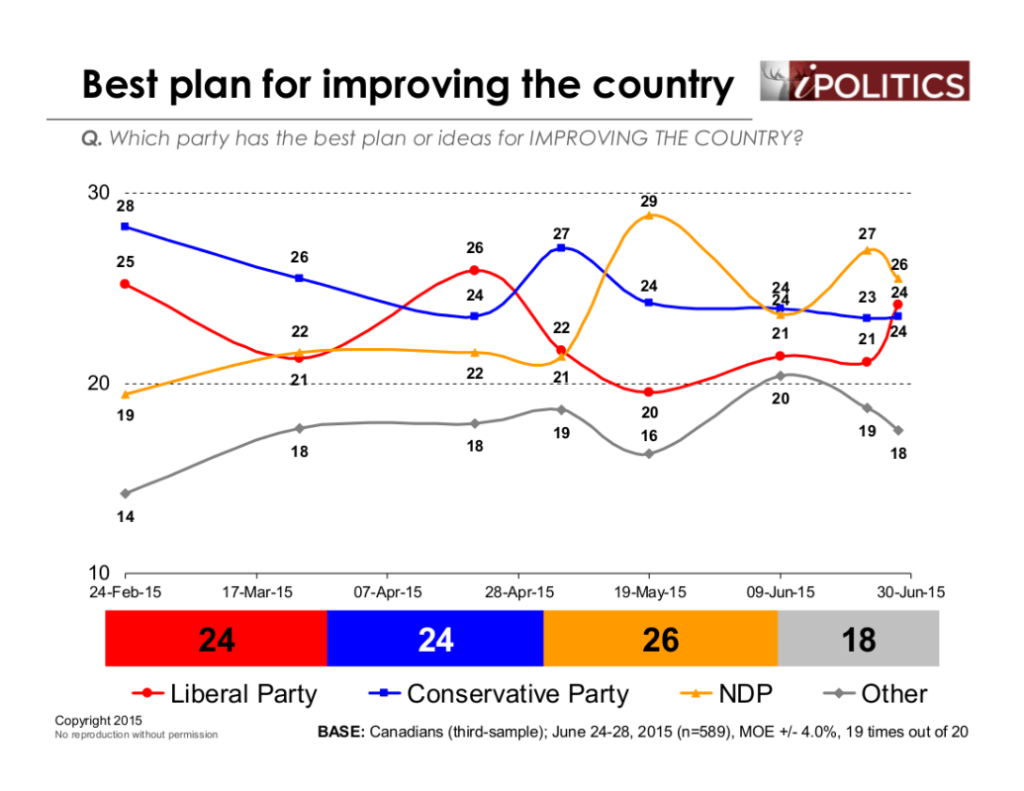
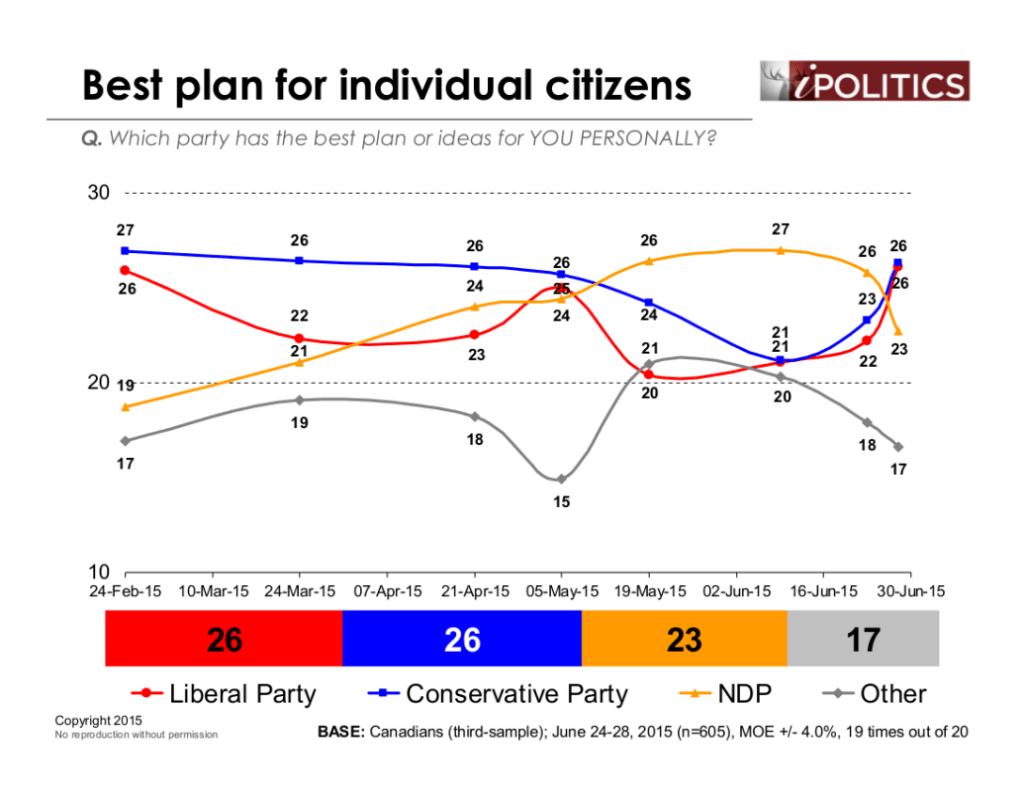
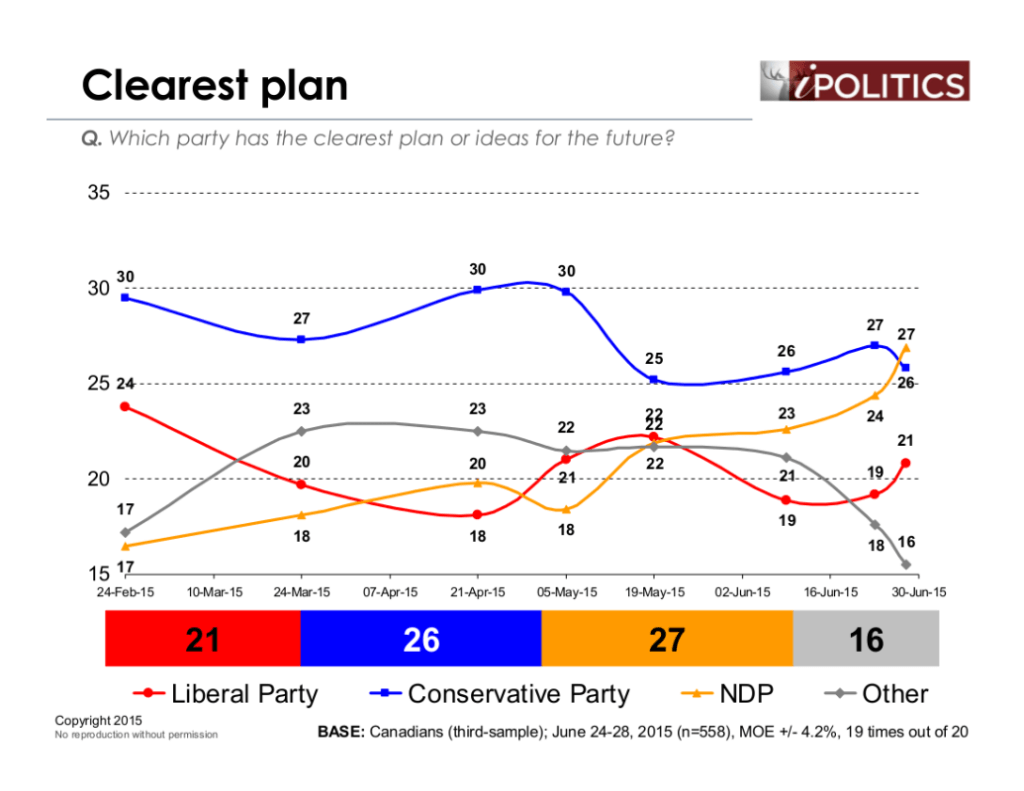
In Conclusion
The newly tightened political landscape provides a fascinating mix of opportunity and risk for the political parties as we enter the vacation and barbeque season. Here are the three most important points to bear in mind:
The NDP rise is real and, while it has plateaued, it leaves the NDP with a modest but clear advantage. This advantage is reinforced by their leader’s clear lead on approval, a good demographic and regional mix of likely voters, and a concentration of voters in some regions which will yield seat dividends.
The Conservatives, while insignificantly ahead of the Liberals, are the party with the sternest challenges ahead. They have extremely scant second choice consideration and, as such, they have very meagre room to grow.
The Liberals appear to be in recovery and can legitimately aspire to close the modest gap they now suffer. Their leader scores well and more importantly, they are showing significant improvement on getting their messages about the future out. As with the NDP, the Liberals have ample head room in terms of second choice to aspire to form government.
The Conservatives, while insignificantly ahead of the Liberals, are the party with the sternest challenges ahead. They have extremely scant second choice consideration and, as such, they have very meagre room to grow. Their leader has by far the lowest approval ratings, the economy is stalled, and they are mired at 27 points, more than 12 points short of their result in 2011 election. They have virtually no political capital left to spend if they encounter any further missteps. It is really hard to imagine what rabbits they have left to pull out of a pretty empty hat at this stage.
In closing, the directional, approval, and best plan numbers show the same patterns of a very tight race with a clear NDP lead, but the Conservatives and Liberals are basically tied for second and are not far back. The overall sense we have is that nothing is very clear in terms of next fall, but barring another security shock, it is increasingly hard to see a path to victory for the Conservative Party.
Approval Ratings

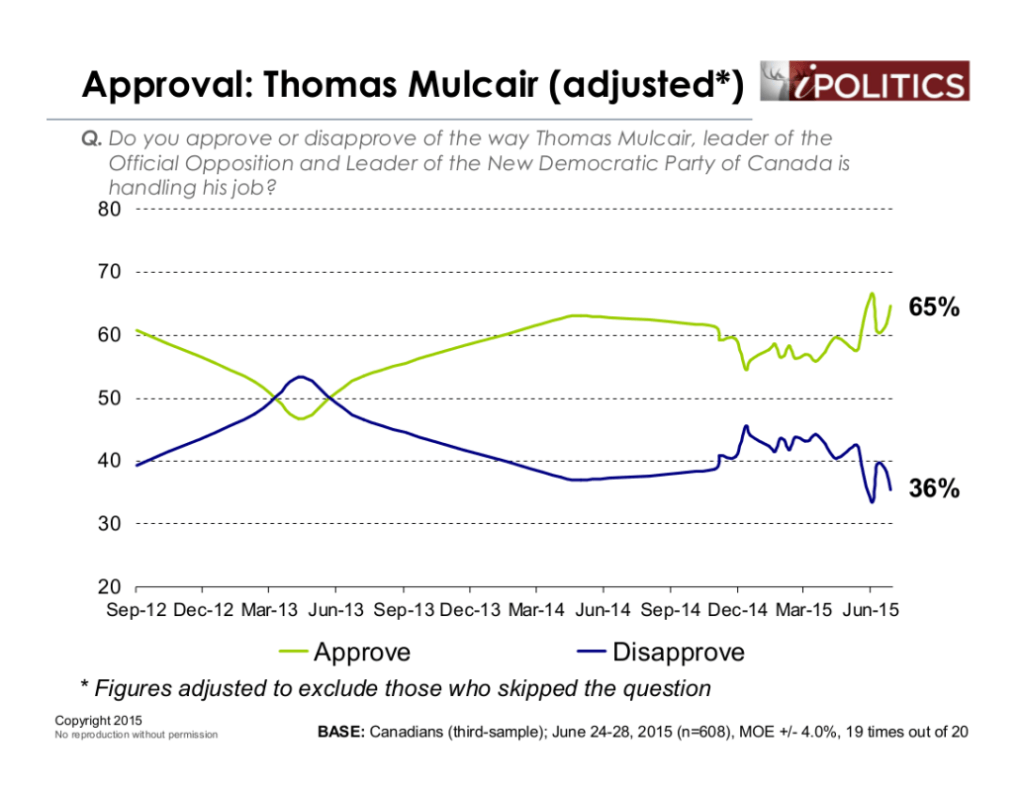

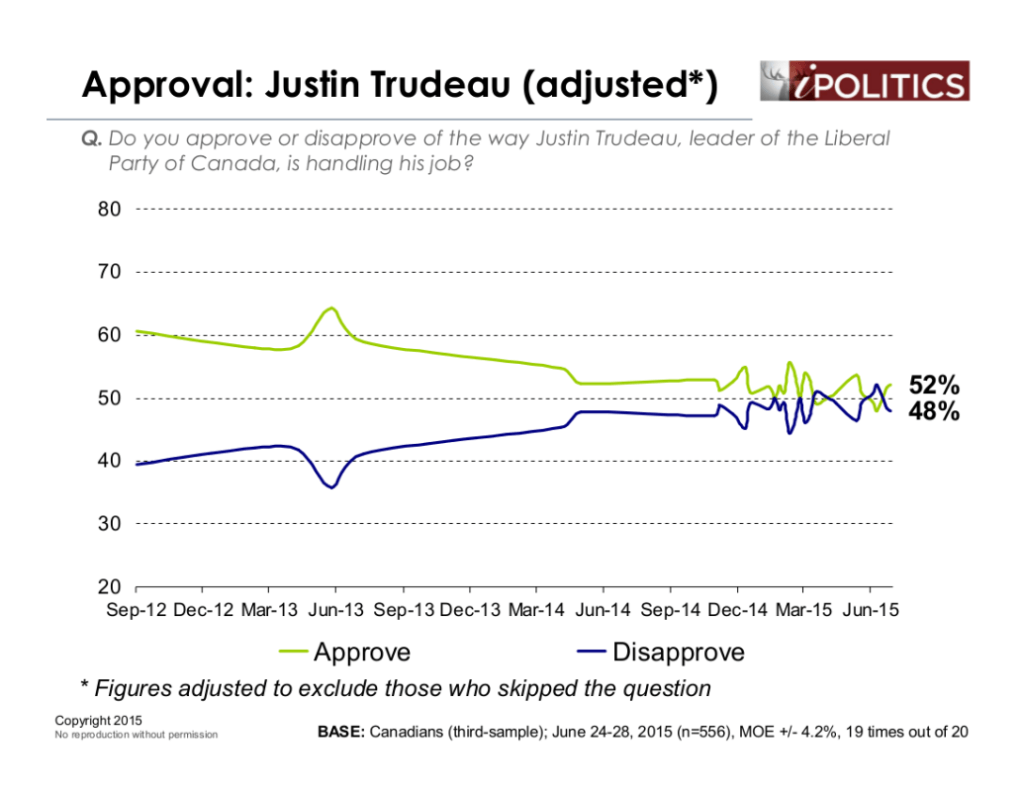
Frank Graves is founder and president of EKOS Polling.
Methodology
This study was conducted using High Definition Interactive Voice Response (HD-IVR™) technology, which allows respondents to enter their preferences by punching the keypad on their phone, rather than telling them to an operator. In an effort to reduce the coverage bias of landline only RDD, we created a dual landline/cell phone RDD sampling frame for this research. As a result, we are able to reach those with a landline and cell phone, as well as cell phone only households and landline only households.
The field dates for this survey are June 24-28, 2015. In total, a random sample of 1,752 Canadian adults aged 18 and over responded to the survey. The margin of error associated with the total sample is +/-2.3 percentage points, 19 times out of 20.
Please note that the margin of error increases when the results are sub-divided (i.e., error margins for sub-groups such as region, sex, age, education). All the data have been statistically weighted by age, gender, region, and educational attainment to ensure the sample’s composition reflects that of the actual population of Canada according to Census data.
Published in Partnership with iPolitics.ca.



